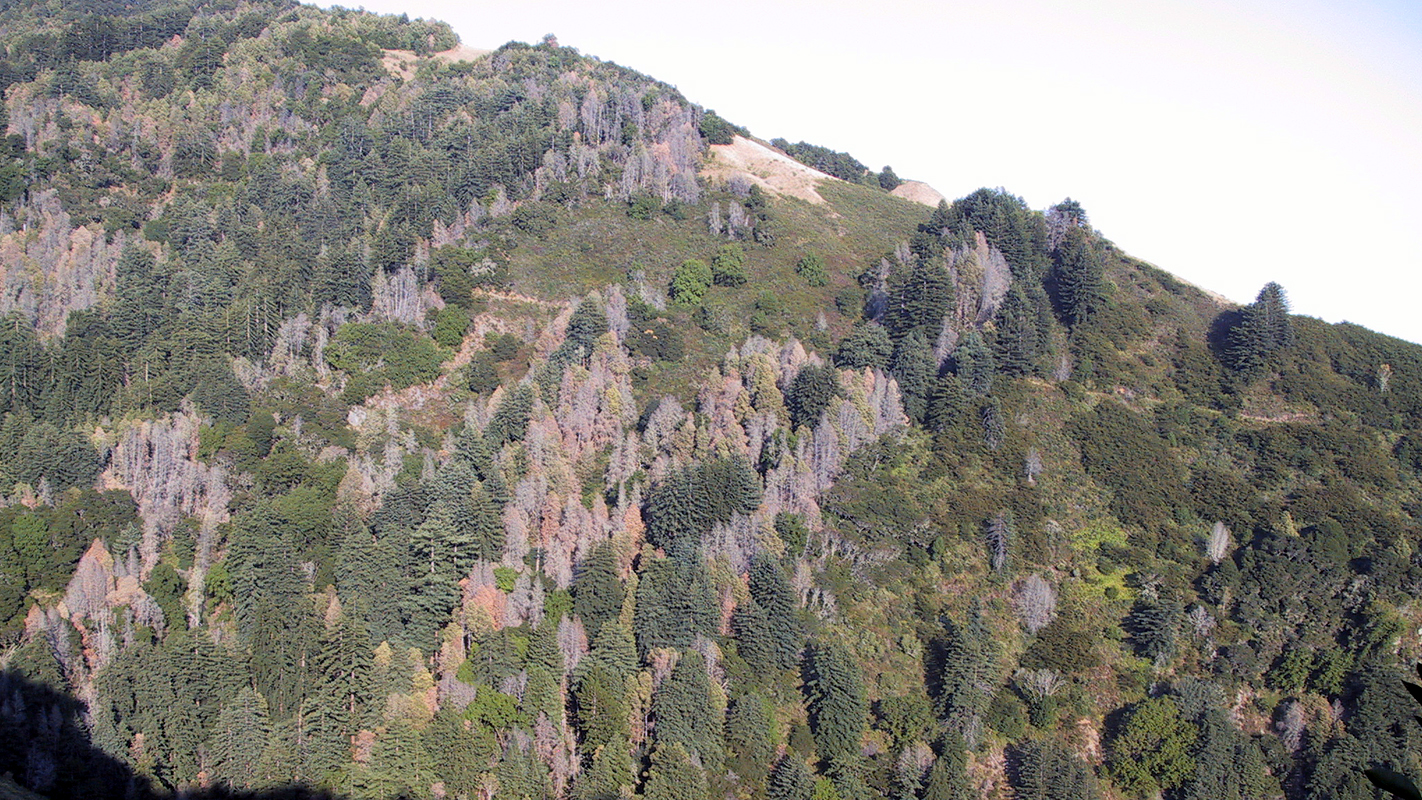A Postmortem on Sudden Oak Death

When is infectious disease unstoppable? In the case of sudden oak death, an emerging disease that’s killed millions of trees in California since 1995, geospatial computer modeling shows that the point of no return was in 2002.
That’s the conclusion of a team of scientists from Cambridge, the University of California, Davis and NC State University, who created a model to study the spread of sudden oak death in the western U.S. Their results, published in Proceedings of the National Academy of Sciences, factor in not only disease transmission processes but also the human, financial and political realities of controlling an epidemic over large regional scales.
“In this case, targeting key sites earlier in the the sudden oak death epidemic would have been essential to stop its spread across California,” said Ross Meentemeyer, NC State Natural Resources professor and director of the Center for Geospatial Analytics. “Halting sudden oak death would have required a very large initial investment – a front-loaded budget.”
Researchers’ initial goals were to find out whether earlier treatment could have halted sudden oak death in California and whether it is still possible to control the disease’s spread given the current size of the outbreak and available budget.
Diseases can be divided into different phases over the course of an outbreak. In phase 1, the disease is under the radar before it’s detected and diagnosed. Little is known about the potential threat. In phase 2, damage continues as the threat is perceived as serious. Enough data are available to create models for different treatment strategies. In phase 3, the disease has spread sufficiently that it’s difficult to stop, but some local containment is possible.
“Unfortunately, at this point in time the model demonstrates that we’ve reached phase 3 with sudden oak death in California,” Meentemeyer said. “Time to action counts – it’s now not feasible to eradicate and probably impossible to significantly slow the geographical spread of this disease, although countless trees can still be protected locally with careful forest management in high priority landscapes, such as national parks and places of cultural heritage.”
Though it’s too late to spare many oak and tanoak trees from sudden oak death, the model could help those in charge of handling future epidemics answer vital questions.
- How quickly must management start?
- When is an epidemic too large to prevent further spread effectively?
- How should local treatment be deployed?
- How does this depend on the budget and level of risk aversion?
- Where should treatment be targeted?
- How should spending be divided between detection and treatment?
- What if the budget changes over time?
The answers could help protect forests worldwide from invading pests and diseases.
- Categories:


